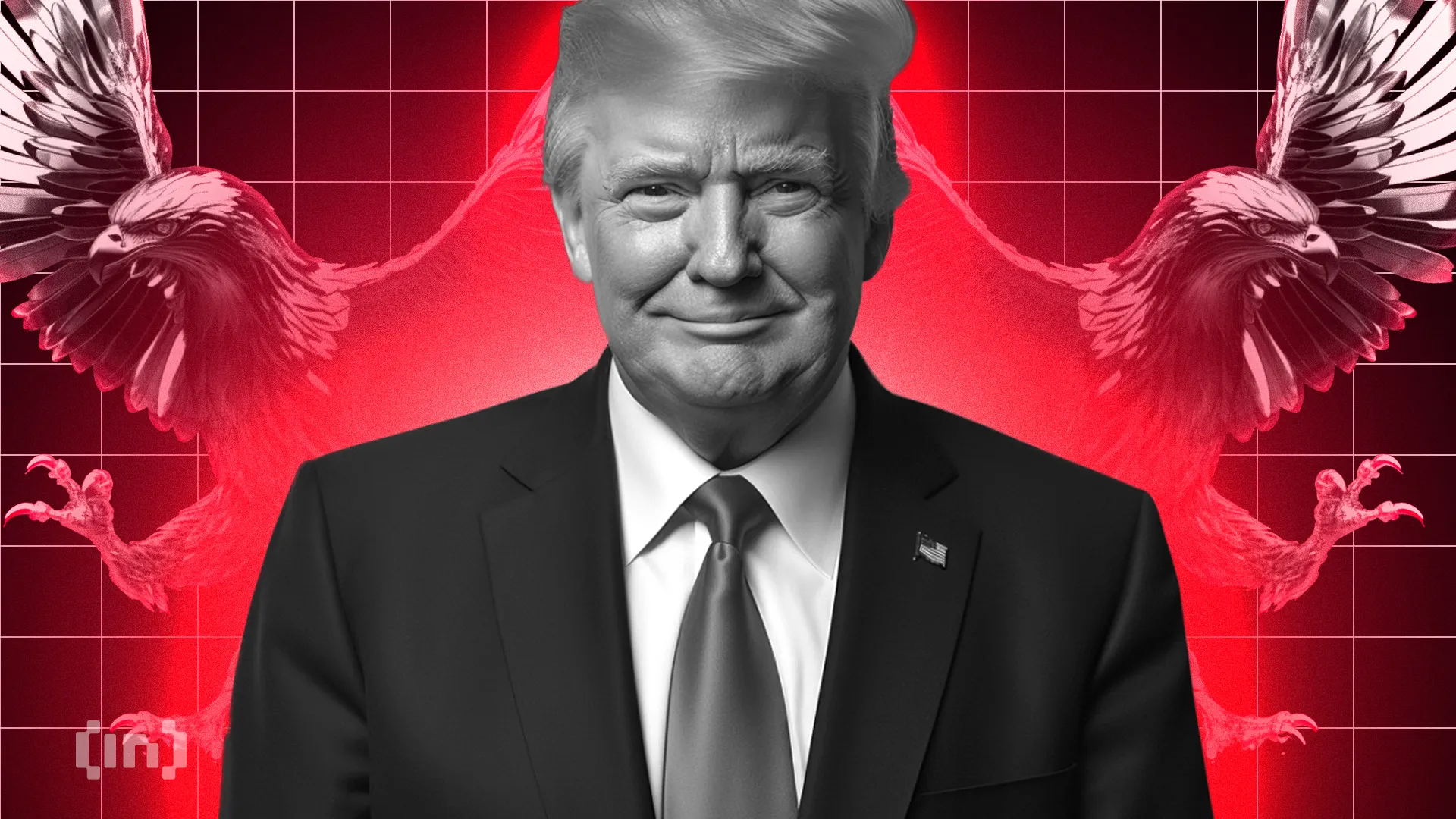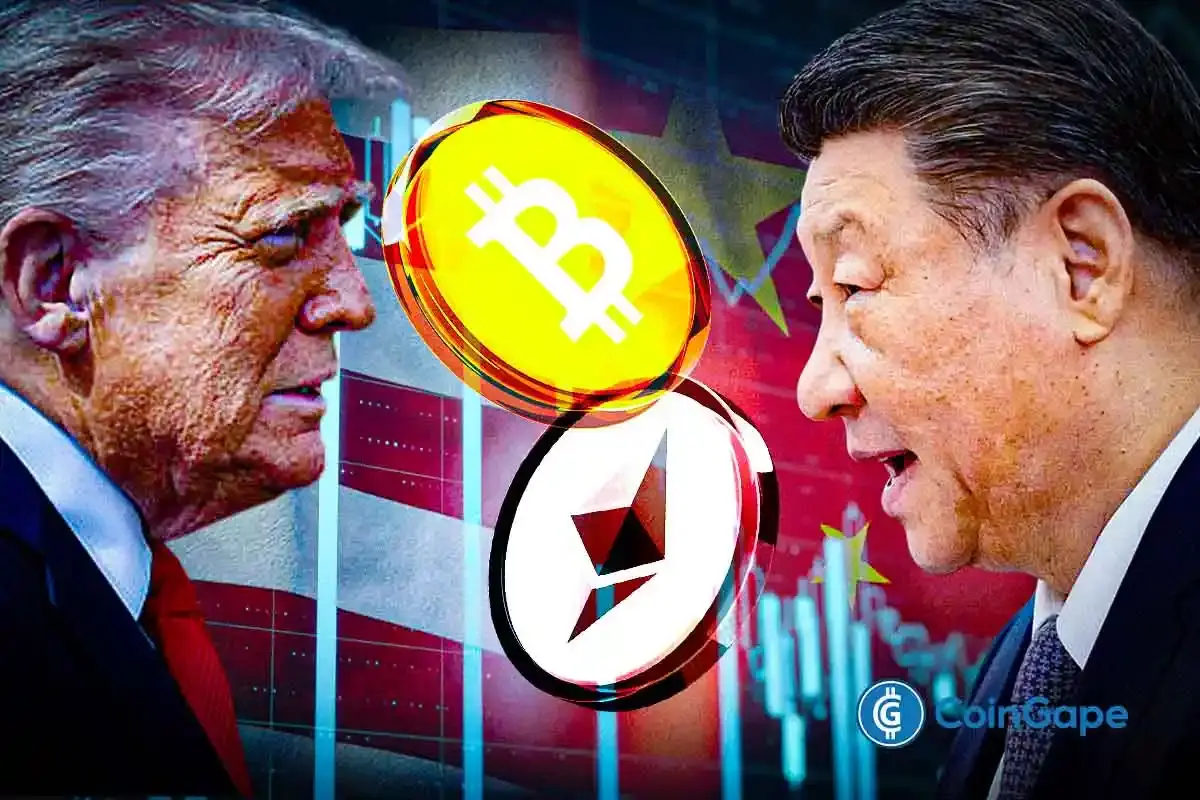Market
President Trump Signs First-Ever Crypto Bill into Law


President Donald Trump signed the first-ever crypto-specific bill into law on April 10, 2025. The bill sought to repeal the IRS DeFi Broker Rule enacted under the Biden administration.
Previously, the resolution passed the Senate with a 70-28 vote and the House with a 292-132 margin. This reflected a widespread recognition of the need to protect innovation and privacy in the digital asset space.
Trump Signs Historic Crypto Bill, Ending IRS DeFi Broker Rule
The IRS DeFi Broker Rule mandated that decentralized finance (DeFi) platforms report transaction data to the Internal Revenue Service (IRS). It also suggested creating a new classification for brokers, including certain participants or entities involved in the DeFi sector.
Senator Ted Cruz and Representative Mike Carey introduced the Congressional Review Act of Disapproval (CRA), H.J. Res. 25, which ended this rule. In the latest press release, Representative Carey stressed that the bill marked the first cryptocurrency law passed and the first CRA related to taxes to be enacted.
He argued that the rule now repealed, stifled growth and placed unnecessary burdens on the sector.
“The DeFi Broker Rule needlessly hindered American innovation, infringed on the privacy of everyday Americans, and was set to overwhelm the IRS with an overflow of new filings that it doesn’t have the infrastructure to handle during tax season. By repealing this misguided rule, President Trump and Congress have given the IRS an opportunity to return its focus to the duties and obligations it already owes to American taxpayers instead of creating a new series of bureaucratic hurdles,” he stated.
Industry leaders widely celebrated the move. Bo Hines, the Executive Director of the President’s Council of Advisers on Digital Assets, took to X (formerly Twitter) to underline the positive implications of Trump’s decision on the crypto sector.
“Huge Moment! First crypto legislation ever signed into law. Repealing the IRS’s DeFi broker rule protects innovation and privacy—another big step toward ushering in a golden age for digital assets,” Hines posted.
SEC’s Shift in Strategy Paves the Way for Crypto Growth
Meanwhile, this legislative milestone coincides with a series of positive regulatory developments. On the same day, the SEC’s Division of Corporation Finance released new guidance on securities issuance and registration disclosures in the crypto asset market.
“As part of an effort to provide greater clarity on the application of the federal securities laws to crypto assets, the Division of Corporation Finance is providing its views about the application of certain disclosure requirements under the federal securities laws to offerings and registrations of securities in the crypto asset markets,” the statement read.
The guidance addresses disclosure requirements related to price volatility, technological risks, and legal uncertainties. It also stresses transparency to ensure investors are fully informed about these offerings’ risks, characteristics, and details. This move signals a more structured approach to regulating crypto securities, potentially easing compliance for issuers while protecting investors.
In another significant development, the SEC dismissed unregistered securities charges against Nova Labs, the firm behind the Helium Network. This ruling removed the securities classification from Helium Hotspots and Helium’s tokens (HNT, MOBILE, and IOT) distributed through the network.
“With this chapter finally closed, Helium, DePIN, and crypto can now move forward with full confidence, accelerating real-world adoption and innovation in the industry. Together, we’ll fight for a future where everyone and everything can connect freely—without the barriers of inflated costs or gatekeepers standing in the way,” Helium remarked.
The dismissal reflected a shift in the SEC’s enforcement strategy under new leadership following Gary Gensler’s departure in January 2025. Since a new presidential term began, the SEC has dismissed several lawsuits and investigations into many crypto companies.
Notably, the regulator even dropped its long-standing lawsuit against Ripple last month. BeInCrypto reported that both parties reached a preliminary settlement agreement in their legal dispute. They filed a joint motion to suspend the appeal process.
These developments collectively signal a turning point for cryptocurrency regulation in the US, balancing innovation with investor protection as the industry continues to mature.
Disclaimer
In adherence to the Trust Project guidelines, BeInCrypto is committed to unbiased, transparent reporting. This news article aims to provide accurate, timely information. However, readers are advised to verify facts independently and consult with a professional before making any decisions based on this content. Please note that our Terms and Conditions, Privacy Policy, and Disclaimers have been updated.
Market
Raydium’s New Token Launchpad Competes with Pump.fun

Raydium is releasing LaunchLab, a new token launchpad to compete with Pump.fun. The exchange announced this platform last month, and its full release has sparked community enthusiasm.
Pump.fun and Raydium have been locked in an intense competition in the Solana ecosystem. Last month, Pump.fun launched its own decentralized exchange, and now Raydium has introduced its own launchpad.
Raydium Increases Solana Dominance with new Launchpad
Raydium, Solana’s largest decentralized exchange, has the opportunity to make some serious gains in the near future. Solana meme coins are eyeing a comeback with heightened trade volumes and rising token prices, and the firm is releasing a long-awaited project.
Although it will compete with Pump.fun, Raydium’s launchpad services look more extensive. They will allow all kinds of tokens to be launched, not just meme coins, and these tokens can be directly traded on the exchange.
“Introducing LaunchLab, Raydium’s all-in-one token launchpad. Built for creators, developers, and the community. Get started with JustSendIt mode: launch a token, hit 85 SOL, [and] liquidity migrates to Raydium’s AMM INSTANTLY. Seamless, on-chain token creation. No migration fee. No gatekeepers,” the firm claimed in its launch announcement.
Pump.fun is the most popular meme coin launchpad on Solana, and its business has been intertwined with Raydium in a few ways. Since it launched Pumpswap, its own DEX, both exchanges have fueled a meme coin frenzy.
A month and a half ago, rumors that it was testing an AMM made Raydium’s RAY token drop significantly.
Last month, however, this same asset soared when Raydium first announced Launchpad. Pump.fun entered the DEX sector, and Raydium is enabling users to launch their own meme coins.
Since this launch announcement took place, RAY spiked around 10%, signifying the community’s enthusiasm.

There may be another explanation for this token rally in addition to community hype. Raydium also mentioned that all of Launchpad’s trading fees will go towards ecosystem development.
More specifically, 25% of these fees will directly fund buybacks of RAY tokens, while the other 75% go towards a Community Pool and Program fee.
These other funds can enable a few generous user incentives. Raydium claimed that Launchpad token creators can earn up to 10% of trading fees from the AMM pool post-graduation, and users can also receive SOL tokens from referring new clients. Token creators will also enjoy several other quality-of-life features.
Disclaimer
In adherence to the Trust Project guidelines, BeInCrypto is committed to unbiased, transparent reporting. This news article aims to provide accurate, timely information. However, readers are advised to verify facts independently and consult with a professional before making any decisions based on this content. Please note that our Terms and Conditions, Privacy Policy, and Disclaimers have been updated.
Market
How It’s Impacting the Network

At the beginning of 2025, Layer-1 (L1) blockchain network Solana found itself in the spotlight, thanks to meme coins.
Donald Trump’s Official Trump (TRUMP) meme coin launch on January 17 ignited a flurry of activity across the network, driving demand to levels unseen since the 2021 bull cycle.
While these volatile assets boosted Solana’s network activity and pushed up SOL’s price, they also present a paradox. They have brought in liquidity, users, and attention—but at what cost?
Presidential Memes Pump Solana Into Overdrive
Solana’s cheap, lightning-fast transactions and highly composable DeFi infrastructure make it one of the most preferred blockchains for launching meme coins. So when newly elected Donald Trump launched his TRUMP meme coin on the network in January, it came as no surprise to many.
Following TRUMP’s launch on January 17, demand for Solana skyrocketed, driven on the one hand by developers eager to launch their own meme coins and on the other by the frenzy of trading activity surrounding them.
Melania Trump followed her husband’s lead by launching her MELANIA meme coin on the same chain two days later. This move exacerbated the meme hype and drove significant trade volumes across multiple meme coins, both existing and newly created.
For example, within a day of launch, MELANIA’s trading volume soared 396%, jumping from $1.33 billion to $6.6 billion, according to CoinGecko data.
Solana Memes Took It to the Moon, Then Back Down
This development drove significant user engagement on Solana. According to Glassnode, by January 24, the network was processing 832,000 active addresses per hour, over 26 times more than Ethereum, which recorded just 31,000 per hour.
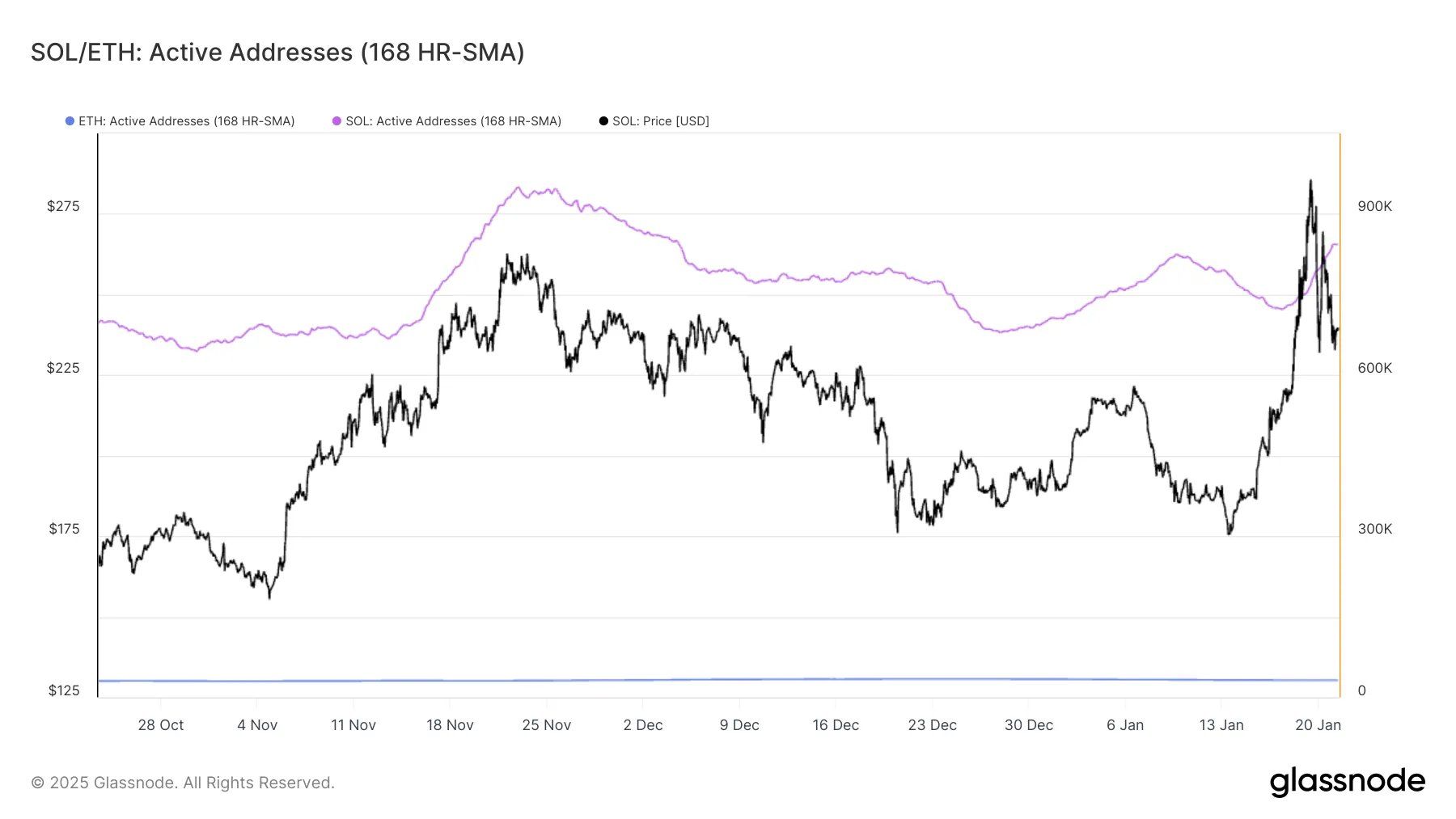
Due to the huge influx of new users on the network, transaction fees rocketed. Per Glassnode, Solana’s total transaction fees climbed to an all-time high of $32.43 million on January 19 after MELANIA launched. On the same day, SOL climbed to an all-time high of $293.
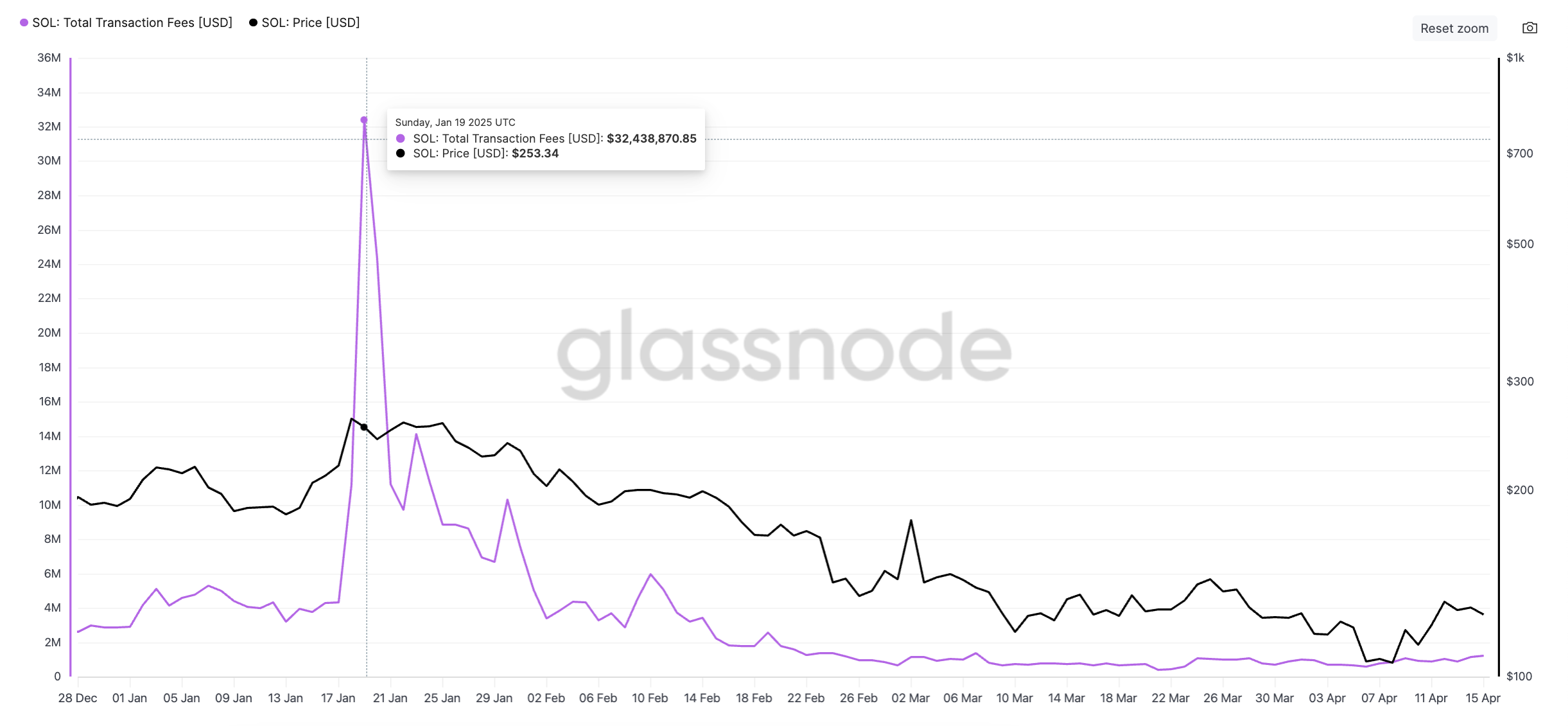
However, market exhaustion set in shortly after this price peak was reached. The meme coin mania began to fade, taking Solana users with it. Daily active addresses and new demand for the L1 plunged, dragging down DEX volume, SOL’s price, and DeFi TVL.
For example, SOL’s DEX volume hit an all-time high of $36 billion on January 19. But as the meme coin hype cooled off, by January 31, it had plummeted to just $3.8 billion, dropping nearly 90%. As of April 15, this totaled $1.5 billion.
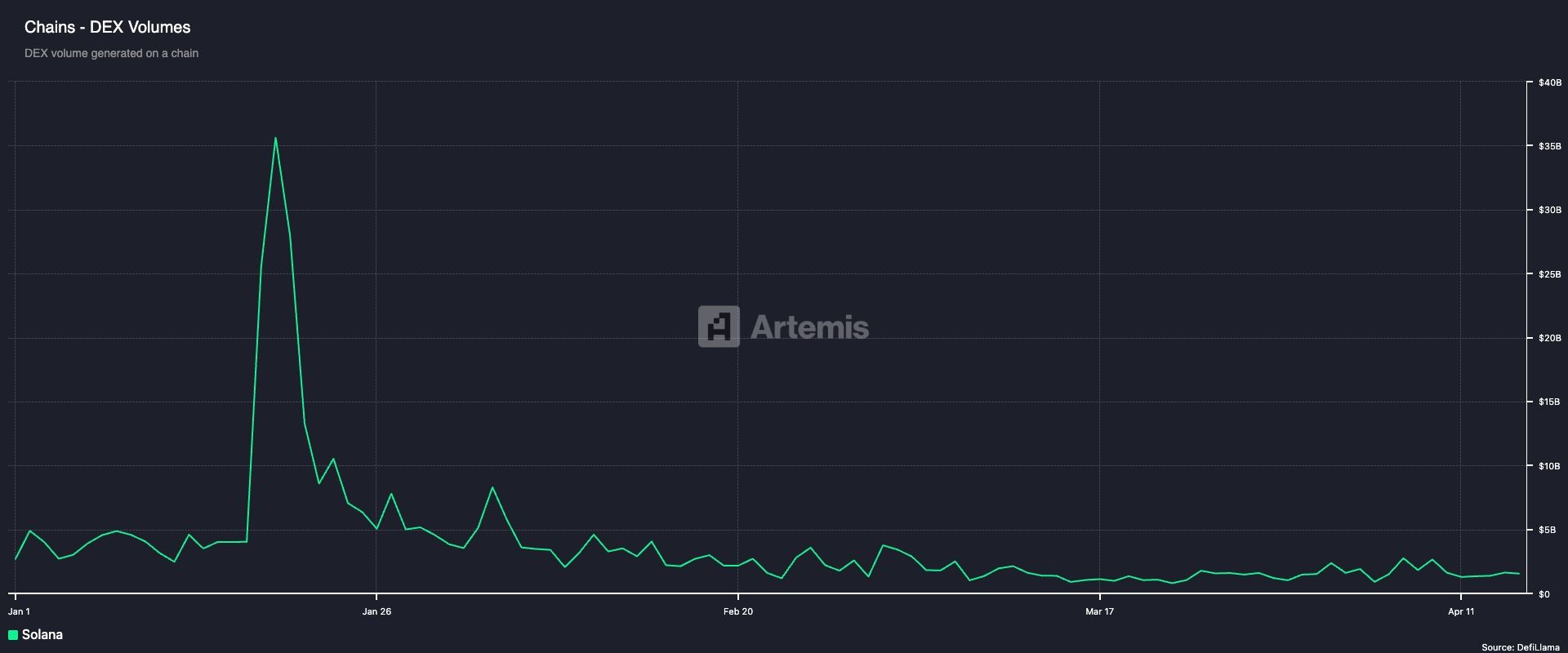
Solana’s network revenue was not spared. Daily revenue, which rose to an all-time high of $16 million on January 19, plummeted to under $5 million by the end of January. Yesterday, the network’s total revenue from all transactions completed was under $115,000.

Solana Has Bigger Plans, Analyst Says
While TRUMP, MELANIA, and the slew of other meme coins that launched on Solana in the first few weeks of the year drove unprecedented network activity and boosted SOL’s value, the drop in their values and overall trading volumes has impacted the network’s performance.
It then raises the question of whether Solana’s actual value is now tied to this highly volatile, borderline chaotic asset class.
In an exclusive interview with BeInCrypto, Binance Research spokesperson Marina Zibareva noted that while these meme assets contributed to the network’s growth at the beginning of the year, Solana’s performance remains “increasingly driven by broader ecosystem fundamentals.”
According to Zibareva:
“We’ve seen DeFi TVL grow nearly 4x in SOL terms since January, and stablecoin supply has increased over 6x – pointing to lasting interest in real utility. Developer activity is also accelerating, with smart contract deployments rising almost 6x, suggesting strong long-term potential beyond the speculative wave.”
Although Solana’s inherent features make it a go-to destination for launching meme coins via platforms like Pump.fun, Jupiter, and Meteora, Zibareva sees a future for the network that stretches beyond meme coins.
“Meme coins have brought attention and users, but the long-term trajectory likely points toward use cases like DeFi, DePIN, Gaming, and SocialFi. Solana’s daily active addresses have increased nearly 6x year-to-date, and with its infrastructure battle-tested, we expect to see more developer activity focused on sustainable value creation,” she added.
Disclaimer
In line with the Trust Project guidelines, this price analysis article is for informational purposes only and should not be considered financial or investment advice. BeInCrypto is committed to accurate, unbiased reporting, but market conditions are subject to change without notice. Always conduct your own research and consult with a professional before making any financial decisions. Please note that our Terms and Conditions, Privacy Policy, and Disclaimers have been updated.
Market
DWF Invests $25 Million in Trump’s World Liberty Financial
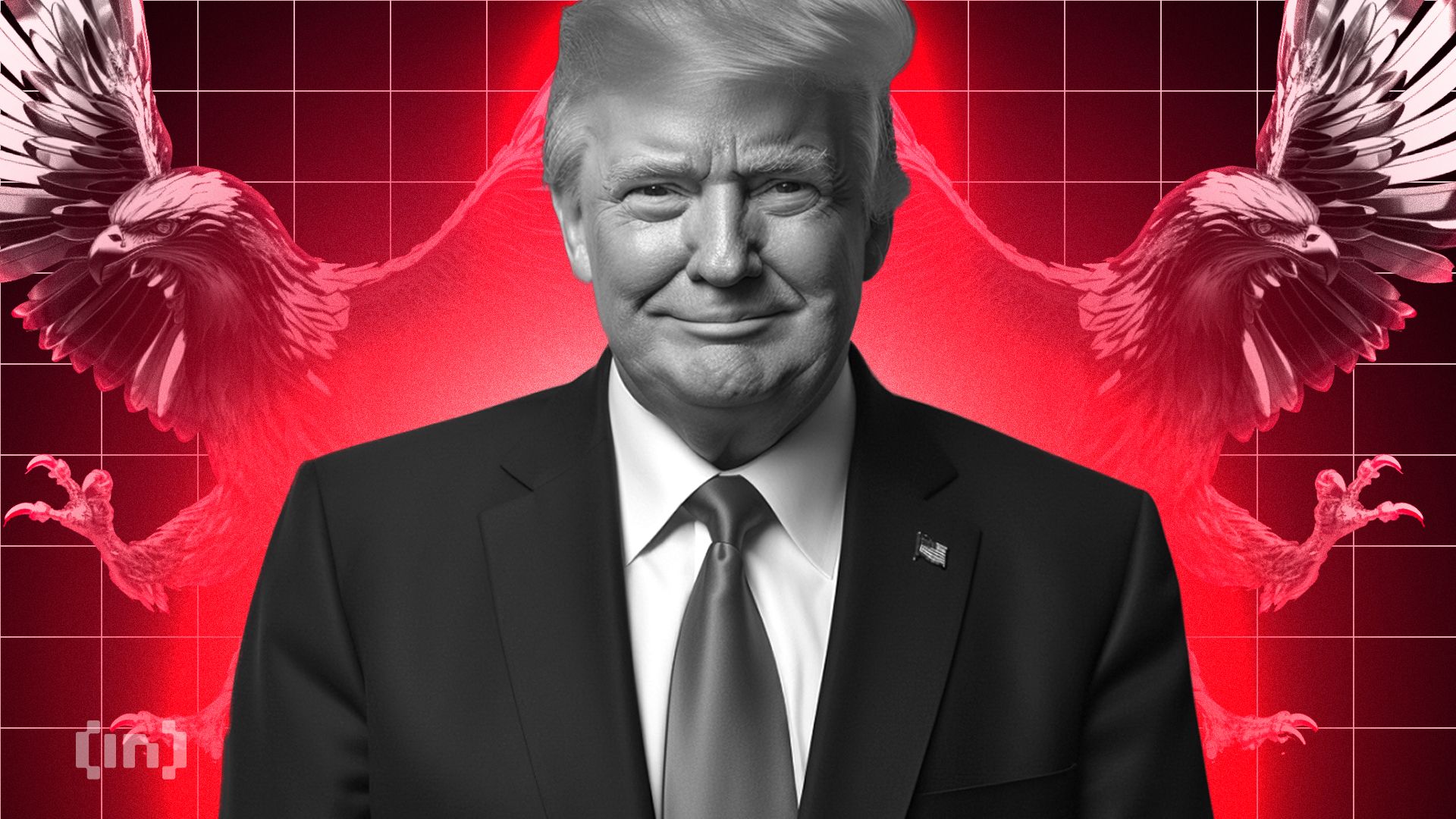
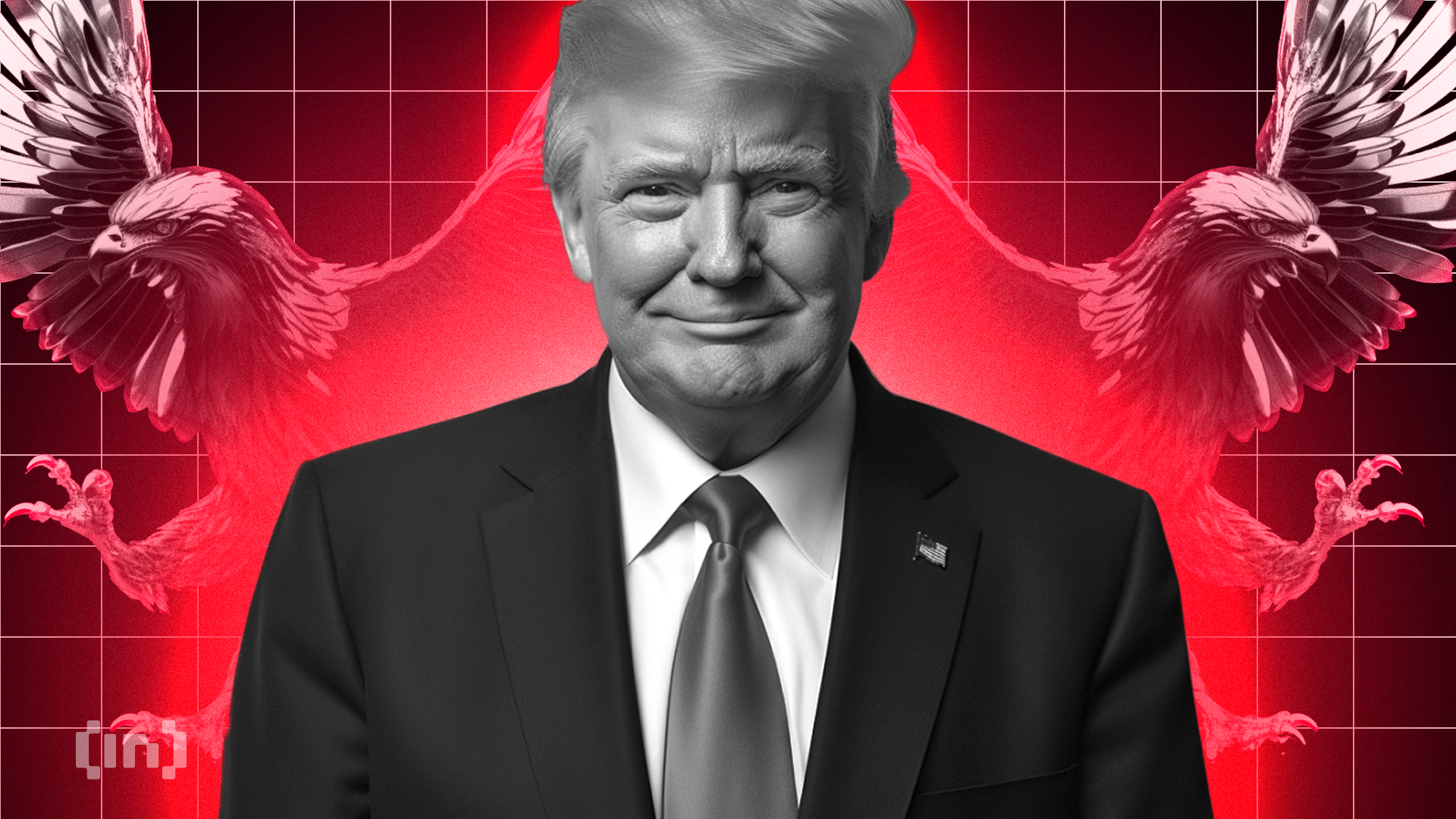
DWF Labs announced today that it invested $25 million into Trump Family-backed World Liberty Financial and is planning to open an office in New York City. It hopes to use this office to drive new relationships with regulators, financial institutions, and more.
Although this partnership would potentially create more liquidity opportunities for the US crypto market, previous allegations against DWF have raised some concerns about political misconduct.
Understanding DWF Labs’ Investment in WLFI
World Liberty Financial (WLFI), one of the Trump family’s major crypto ventures, has been making some big moves since the President’s inauguration in January.
The DeFi project allegedly entered talks with Binance to launch a new stablecoin, and it officially announced USD1 shortly after. Today, WLFI has entered a new partnership with Dubai-based Web3 investment firm DWF Labs.
“The US is the world’s largest single market for digital asset innovation. Our physical presence reflects our confidence in America’s role as the next growth region for institutional crypto adoption. Moreover, the USD1 stablecoin and forthcoming global DeFi solutions align with our broader mission to improve financial services,” claimed Managing Partner Andrei Grachev.
DWF’s statement includes a few key details about its new relationship with WLFI. It essentially boils down to two key points: the firm has already purchased $25 million in WLFI tokens, and it plans to open a physical office in New York City.
On a positive note, this partnership could be significant for the overall US crypto market. DWF Labs has a portfolio of over 700 crypto projects.
So, physically setting up a hub in New York will give me regulatory freedom and the opportunity to invest directly in the local crypto market. This would potentially open up more liquidity for upcoming Web3 projects and startups in the US
Concerns of Financial Misconduct
Although DWF Labs is a popular market maker, it has been at the center of major controversies. Last year, it was accused of wash trading and market manipulation, and Binance allegedly shut down its internal investigation due to financial incentives.
Also, one of its partners was dismissed back in October over allegations of drugging a job applicant. So, the firm’s credibility and reputation have been shaky in recent times.
This is to say that the crypto community has reasons to worry about a deal between DWF and World Liberty Financial. A report from late March determined that most WLFI revenues go directly to Trump’s family.
WLFI owners are unable to actually trade their tokens, and the stated governance use of the assets seems unclear. In other words, there isn’t a clear reason why anyone would invest.
The growing concern is that firms like DWF would invest in WLFI as an easy tool for political corruption. Shortly after the election, Tron founder Justin Sun invested $30 million into World Liberty. Trump’s family apparently got most of this money, and the SEC settled a fraud case against Tron in February.
If DWF Labs invested a similar amount in WLFI, could this give it some legal protection? The Department of Justice already gutted its Crypto Enforcement Team, and New York’s US Attorney also signaled its intent to stop crypto prosecutions.
As this deal goes forward, it will be important to look for signs of any possible financial misconduct.
BeInCrypto has contacted DWF Labs about the 2024 market manipulation claims but has yet to receive a reply.
Disclaimer
In adherence to the Trust Project guidelines, BeInCrypto is committed to unbiased, transparent reporting. This news article aims to provide accurate, timely information. However, readers are advised to verify facts independently and consult with a professional before making any decisions based on this content. Please note that our Terms and Conditions, Privacy Policy, and Disclaimers have been updated.
-

 Market23 hours ago
Market23 hours agoBitcoin Eyes $90,000, But Key Resistance Levels Loom
-

 Ethereum19 hours ago
Ethereum19 hours agoEthereum Metrics Reveal Critical Support Level – Can Buyers Step In?
-

 Market19 hours ago
Market19 hours agoSolana (SOL) Jumps 20% as DEX Volume and Fees Soar
-

 Market18 hours ago
Market18 hours agoHedera Under Pressure as Volume Drops, Death Cross Nears
-

 Bitcoin22 hours ago
Bitcoin22 hours agoBitcoin Adoption Grows As Public Firms Raise Holdings In Q1
-

 Market16 hours ago
Market16 hours ago3 US Crypto Stocks to Watch Today: CORZ, MSTR, and COIN
-

 Market14 hours ago
Market14 hours agoBitcoin Price on The Brink? Signs Point to Renewed Decline
-

 Market17 hours ago
Market17 hours agoEthena Labs Leaves EU Market Over MiCA Compliance


